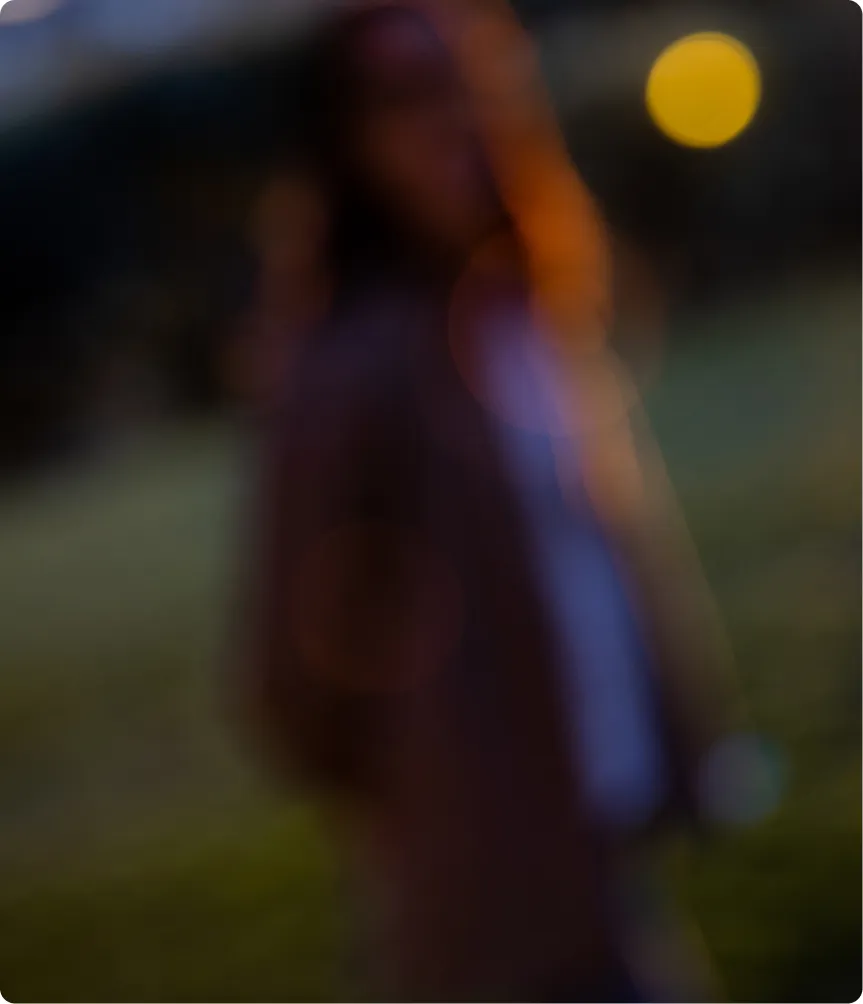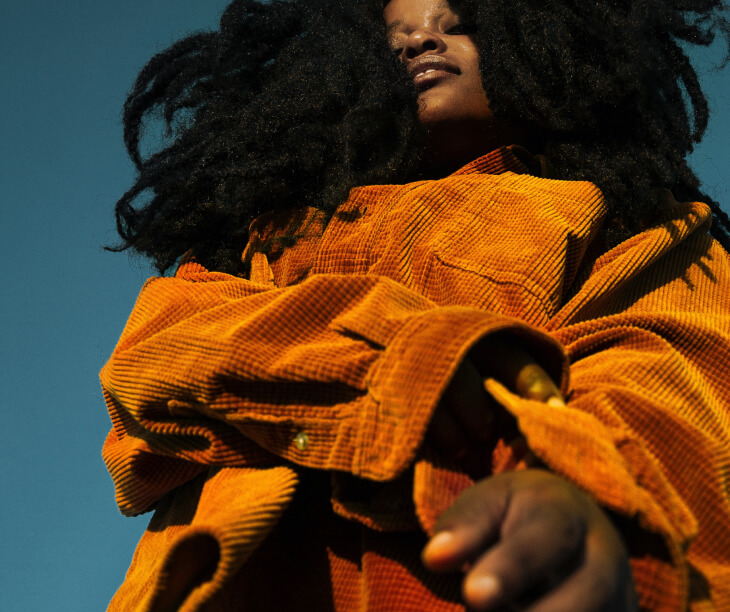What are Psychedelic Therapy "Containers?"

When you begin your journey towards psychedelic therapy and/or ketamine treatment, you may hear the term “container” in your conversations with facilitators or clinical providers.
There are two other containers outside of the therapeutic experience that will be explored below: recreational experiences, and what we will call "intentional" experiences.
These are both done outside of a clinical or therapeutic context and outside of the support and structure that comes with that setting, though there are helpful distinctions to draw between the two of them. To begin, let’s start by taking a closer look at what is meant by the term container, and why it’s a necessary and critical part of psychedelic therapy.
What Are Containers
A container is a metaphor, alluding to the value and importance of structure and systems within any emotionally or psychologically sensitive work.
A classic container is an external structure or scaffolding which holds things together for the contents to be safe within. This is an apt metaphor because it is the protocols, systems, care providers, and best practices that provide a safe and supportive environment for individuals to embark on healing experiences with psychedelic medicines.
Let’s take a moment to acknowledge that experiences within psychedelic therapy can be: challenging, uncertain, overwhelming, awe-inspiring, emotionally-intense, mind-expanding, and a whole lot more. Given the sensitivity, powerful, and potent nature of these experiences, it’s important that they are met with a complimentary amount of balance, structure, and scaffolding. This helps provide a safe and supportive environment for the experience to unfold within.
In this resource, we’ll examine 3 different “containers” that these experiences may come up within, giving an overview of each and then exploring the key differences and critical concerns that can be present within each. To begin, let’s outline what components go into creating a safe and structured container.
Container Components
The exact details will vary with the context, the individual, the medicine, the care providers, and many other factors. There are some common components that go into creating a safe and structured container for individuals moving forward with a psychedelic therapy protocol.
Intake Process
Before the first session, it’s important to ensure client safety through a robust intake process. These include medical and psychological fitness screenings, informed consent, and opportunities to ask questions to the providers.
An important aspect of a safe container is that all parties are fully informed, and have consented to move forward on an agreed-upon protocol together.
Program Structure
Another core component of a safe experiential container is a clear and defined program structure.
This must be acknowledged and agreed upon by all parties involved in the process. The structure includes things like number of dosing sessions, cadence of those sessions, available resources and support, and acknowledgement of boundaries —what is not in the scope of the program.
Quality Assurance
Particularly when using exogenous compounds to alter consciousness, it’s important for the safety and efficacy of individuals that they have trust and confidence in the medicine and compounds they are taking.
Part of this is quality assurance: a mechanism to ensure they are taking quality medicine, from trained and licensed providers, in a safe and evidence based manner.
Ongoing Support
A psychedelic therapy program extends over time, sometimes weeks and months, and a safe container includes access to support along the way.
The level of support may vary, but having access to additional resources, a way to contact the primary care provider, or receive further 1:1 support, is helpful and important.
Set & Setting
As always, making the physical environment and the mental state as open and welcoming as possible for the client is an important component of designing a safe container for the experiences. This can take many forms and will be unique to each individual, but is an essential part of the process nonetheless.
This is not an exhaustive list, as it provides a meta-structure, or some critical components that should be considered when discussing therapeutic containers or psychedelic medicine experiences in general.
Across recreational, intentional, or therapeutic experiences, certain components mentioned above may be heavily considered, lightly considered, or absent from the process entirely.
Recreational Containers and Experiences
The first environment you may encounter psychedelic medicine is in a recreational capacity, and the associated containers and experiences that come with that environment.
Defining the recreational container or experience
Recreational experiences happen with every kind of medicine, from psychedelics, to a variety of prescription medications that may be taken outside of the way in which they are prescribed. Individuals may seek out these experiences for a variety of reasons such as for pleasure, attempts to self-treat, or because of addiction or physical dependency.
The environments, or physical settings that these experiences happen within are extremely varied. They can include being in someone's home, a friends or stranger's home, at locations like nightclubs or festivals, and in other public areas.
A core component of recreational containers is that they are set up by the individual taking the substance. Everything from the set and setting, procuring the substance and deciding on dosing, to the support and resources available to them throughout and after the experience — these are all entirely up to the individual, as they are not within a therapeutic or intentional container that may have more support.
Important considerations with recreational experiences
While there are many individuals who take certain compounds and are safe and healthy members of society, there are significant concerns that arise here regarding purity of the medicines, potential for addiction and/or adverse events, and lack of support in case of medical emergency or mental destabilization.
If you are considering a recreational experience, there are important and potentially life-saving considerations that need to be made. You will always be better off consulting with trained professionals in the space to make informed and effective decisions for you and your healing journey.
Intentional Containers
Another context that you may find yourself exploring along this path is that of an "intentional" container. It is possible that this could also be considered a recreational experience within a recreational container, though there are a few common and important distinctions that come up that likely make this worthy of a separate and distinct designation.
They have been named intentional for exactly that reason, they are similar to recreational experience, though a lot more intention, concern, and attention have been paid to specifically designing a supportive container for this experience. The individual may understand the healing potential of the experience and wishes to create a container as conducive as possible for a safe and powerful experience.
Key differences between intentional and recreational containers
Some key differences when compared against recreational containers can include:
- Presence of a “trip sitter” or supportive friend/individual, in case any additional support or comfort is needed throughout the experience.
- Set and setting are more deeply considered, and the experience is often done in a comfortable room, perhaps with soundtracks, eye masks, or comfortable clothing.
- Dosing may be weighed out or confirmed, and/or the compounds tested with testing kits.
- The individual approaches the experience with a specific healing intention in mind, and is comfortable with the psychedelic experience overall.
Though these steps are not exhaustive, and not executed at the same scale as a therapeutic container, there are enough distinct differences between intentional and recreational containers that it feels like the unique designation is justified.
Of course, there are critical steps, particularly the lack of trained support during/after, and limitations of testing drug purity and identifying exact dosages that are missing from something like a therapeutic container/protocol, but they are notable steps beyond those of recreational containers/experiences.
Therapeutic Containers
The final container to look at is that of therapeutic containers. Therapeutic containers have been specifically designed by trained professionals and experts in the space to be safe, secure, effective, and powerful for the clients and individuals who enter the experiences.
Defining the therapeutic container
The therapeutic container is required to have, and designed with, evidence based best practices across all of the container components in mind.
This includes fully formed client intake and consent processes, support and interaction with licensed clinicians, extreme standards for medicine purity and potency, as well as structured programming and supportive resources. These are safe and structured containers designed with client safety and experience as the core foundational principles.
For some, there are concerns that arise around the structure of therapeutic containers. This includes an over-reliance on the systems and structures, which can limit the time and access clients have to practitioners, or force the often nebulous edges of the psychedelic experience into a highly structured container that can miss some of the nuance.
Though these concerns are valid, the teams designing these are able to work with these feedback and build them into the structure of the containers, ensuring safe but consistent improvements over time.
Individuals are trusting companies and clinicians with sensitive and trusted issues such as working through past traumas, managing highly challenging emotions, or opening up the flexibility of their minds. Safe and structured containers are becoming more and more important, to be able to hold the space and experience so that the client can move towards healing and wholeness on their own, at their own pace.
Key Differences & Concerns Between Recreational, Intentional, and Therapeutic Containers
To clearly highlight some of the key differences between all 3 kinds of containers that have been discussed, there are a few areas to draw attention to.
Potency and/or purity of medicine
In recreational experiences, with the compound often bought off of a friend or “dealer,” it is difficult if not impossible to confirm what exactly the compound is, its purity level, and the exact dosages.
With intentional experiences, there may be —but not often— some at-home testing involved, giving a better, but not perfect, sense of the purity of the compound. If it arrives pre-dosed (as is the case in things like LSD tabs), determining dosage is more of an estimate than an exact science.
In therapeutic experiences, clients can be confident that they receive 100% pure compounds, dosed exactly by trained clinicians for their exact circumstances, and produced by regulated organizations and compounding pharmacies.
Set & Setting considerations
Recreational containers may have little to no consideration of set and setting. In environments like night clubs or festivals the decision to ingest a compound may be a spur-of-the-moment decision, and the environment may not be conducive to the intention they have, if they have one at all.
Intentional containers do a better job at this, as there is often intentional consideration given to the specific set and setting of the experience.
In therapeutic containers, there are often specific protocols for adequately and fully preparing for the experiences, with expertly-crafted recommendations to create the most conducive set and setting for the experience.
Additional or professional support
The session experiences themselves are an important part of a psychedelic therapy process, but not the only component that drives safe and effective outcomes. Additional, professional support is a critical part of this process as well.
In recreational experiences, any additional support is largely absent, except for a few friends that may be around or any helpful strangers that are attuned to the individual's state.
In intentional containers, there may be —though not always— a friend/supportive individual serving as a trip sitter. However they are often not trained in emergency response, crisis management, or navigating psychologically intense experiences. This can be sensitive work, and if not done properly, these experiences can cause harm.
Therapeutic containers ideally have an excess of additional or professional support. This includes trained clinicians for the intake, medical screening, and dosing process. It also includes expert guides or facilitators to support the preparation, dosing, and integration sessions. There’s also typically a library of expert programming or resources available to the individuals as well.
All aspects of safe containers combined drive effective and powerful healing experiences and outcomes for clients. It’s important to consider all of these factors when making these decisions for yourself.
Conclusion
None of this resource is intended to say which container is right or wrong for you, it is simply meant to provide information so that you can make safe and informed decisions for yourself.
Different experiences and different medicines may call for different containers. That is okay. What is important is that you are safe, and that you are receiving the healing that you need.
If you would like to discuss any of this further, or if you are interested in moving forward with psychedelic therapy in a therapeutic container, consider reaching out to us by taking a brief assessment to begin the conversation.
Above all, stay safe, stay healthy, and here’s to your healing!
This article is for informational purposes only and is not intended to be a substitute for professional medical advice. Always talk to your doctor about the risks and benefits of any treatment. If you are in a life-threatening situation, call the National Suicide Prevention Line at +1 (800) 273-8255, call 911, or go to the nearest emergency room.
More articles
Psychedelic Therapy. At Home.
Take control of your mental health from the comfort of your own home. Get started below.











